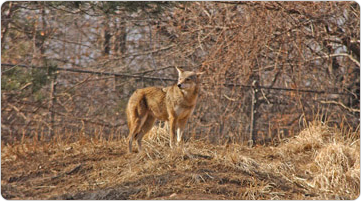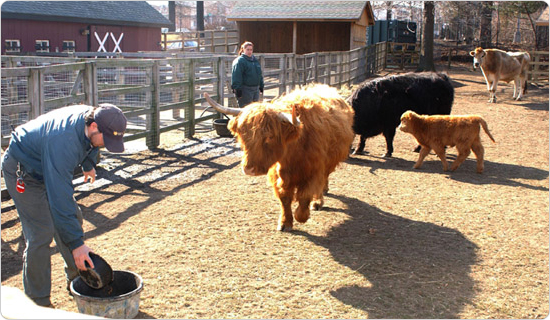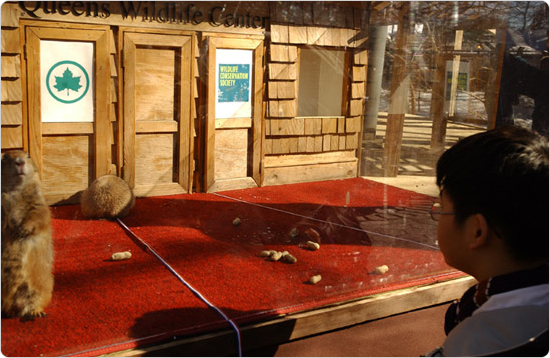History of the Queens Zoo
The Queens Zoo in Flushing Meadows Corona Park opened October 26, 1968 on the grounds of the 1964-65 World's Fair. The last borough to get its own zoo, over 10,000 people attended the ceremony at which former Parks Commissioner Robert Moses, then-current commissioner August Heckscher, and Metropolitan Transit Authority President William T. Ronan all spoke at the opening. Ronan's seemingly incongruous attendance is due to the fact that Moses' Triborough Bridge and Tunnel Authority was partially responsible for Flushing Meadows Corona Park's transformation from World's Fair site to city park (temporary control of the site had been given to the World's Fair Committee before it reverted to city property; that Moses' TBTA was involved was a quirk of Moses' ubiquitous control of many City and quasi-municipal agencies).
The 13-acre zoo featured North American animals and birds in naturalistic settings, including bears, bison, wolves, water fowl, raccoons, otters, a coyote, a mountain lion, and an insect house. The aviary, originally a Buckminster Fuller-designed geodesic dome that served as the Winston Churchill Pavilion during the 1964-65 World's Fair, became an aviary, with a spiral walkway and screens that let air circulate through the structure. The Queens Zoo is not without its share of art: the Gates of Life, ornamental bronze gates by Albino Manca and the architectural firm of Clarke and Rapuano, depict mammals, birds, marine life, and plants.
The Queens Zoo's farm zoo actually opened February 28, 1968, in advance of the full zoo. The Heckscher Foundation contributed considerable funds towards the farm zoo, which allowed city children what it was like to get close to a chicken, goat, cow, or rooster. The farm zoo was renovated along with the rest of the zoo in the early 1990s.
Early on, the zoo was plagued by poor employee training and the city's severe fiscal crisis during the 1970s. In 1979, a little more than ten years after its opening, officials derided the Queens Zoo as a “poor man's zoo” and called attention to the dilapidated condition and underfunding of the zoo. A contemporary account of the zoo noted that the aviary had been closed for years, several wolves had been able to evade zookeepers, and the sea lion pool actually was home to only a few beavers. The last of the three city-run zoos to be built, it would soon be completely renovated when the New York Zoological Society assumed responsibility of it and the Central Park and Prospect Park zoos.
The Queens Zoo reopened to the public on June 25, 1992 after a delayed opening because of a shortage of operating funds. The second of three city zoos to be renovated and operated by Wildlife Conservation Society, the $16 million reconstruction focused on the zoo's initial strength as a showcase of American wildlife. Pathways at the zoo lead visitors to pockets of wild habitats, from the Great Plains to a rocky California coast to a Northeast forest. American species on display include American bison, mountain lions, California sea lions, American bald eagles, and Roosevelt elk.
Related Videos
The Aviary at the Queens Zoo


